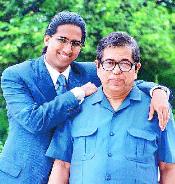There are many scientific facts our minds have come to register during the years. While some of these are true, others have been proved wrong over time. However, in spite of them being proved wrong, we still continue to believe these facts today. Take a look at the following scientific facts that have been proved wrong, but are still believed by many.
Bulls are enraged when they see red color

In truth, a bull’s vision is dichromatic, which means they are colorblind. They simply see variations of the same tone rather than different colors. So why do they charge on seeing red you ask? They actually charge in response to the motion of the flag. So irrespective of red, green, blue or any other color, the bull will be enraged if you move the flag around.
Bats are blind

Not true! Bats are not blind like everyone believes them to be. Some bats have very narrow eyes that make their eyesight poor in a low light environment. Other bats on the other hand have larger eyes that make them see better. So the term ‘blind as a bat’ does not actually hold true.
Birds are dumb

Definitely not true! Some birds like crows and parrots are known to be really smart. In fact, these birds have forebrains the same size as apes, thus possessing an ape like (or in some cases, even better) intelligence.
Fingernails and Hairs grow even after death

No they don’t. Immediately after death, the glucose supply needed for hair and nail growth is cut off, meaning there is no way for them to grow after a person dies. But then why do they look like they continue to grow after death? The answer is simple. The skin simply dries and pulls back from the base of the nails and hairs, thus resembling growth.
A volcano wiped off the dinosaurs from earth

Although this is widely believed, it was not actually a volcano that wiped off the dinosaurs from the face of the earth. Rather, it was perceived that an impact from an asteroid made life impossible on earth. By the time everything cleared up, the dinosaurs had long gone.
Different parts of the tongue can detect different tastes

The tongue contains nearly 10000 taste buds with taste receptors that can detect the chemicals in our saliva to detect taste. These receptors are present all around the mouth and simply pick up the food chemicals in the saliva to detect taste.
There are many scientific facts that have been proved wrong over time. However, these are the facts that we still continue to believe in even today.




